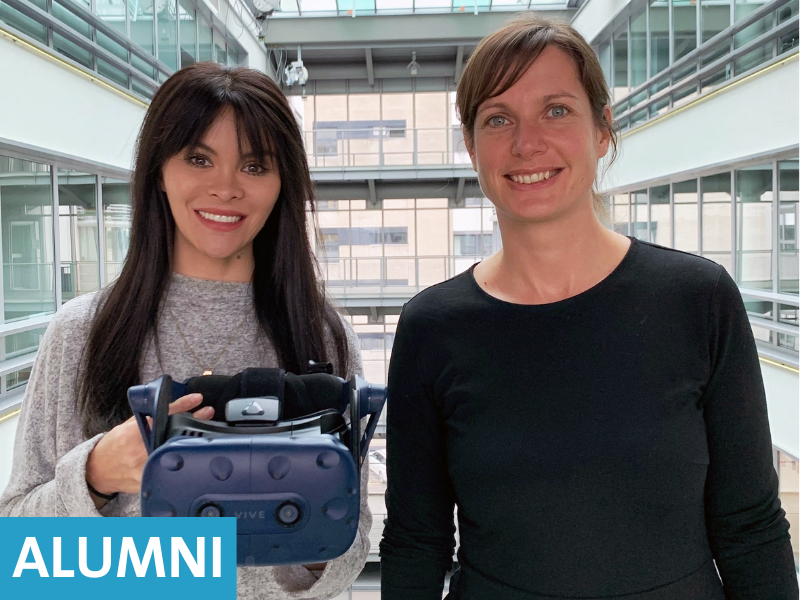Navigation auf uzh.ch
Navigation auf uzh.ch

Jasmine Ho aims to develop a non-invasive treatment method for chronic pain based on virtual body illusions. During the UZH Entrepreneur Fellowship, she will develop the professional software of SomaRem and perform the initial proof-of-concept testing. Future steps will include the implementation of SomaRem in hospital and physical rehabilitation centers, though the final goal, with continued development of the technology, will be to implement SomaRem as an interactive rehabilitation tool to be used in patients' homes.
With roughly 1 in 5 affected individuals, chronic pain is incredibly widespread on a global scale. Unfortunately, standard drug treatment does not consistently provide adequate relief and is often tied to adverse events. Disturbances in body perception (i.e., alterations in the way the body is perceived) are increasingly acknowledged as a pertinent feature of chronic pain [1,2]. In addition, the degree of body perception distortion has shown to positively correlate with pain, where those in more severe pain also report more extensive body perception disturbances. Interestingly, treatments aimed at reducing body perception distortion correspondingly reduce pain [3]. Distorted perceptions of the body therefore constitute a promising target for feedback intervention programs.
The multimodal stimulus control of virtual reality (VR) enables physical-to-virtual body transfer illusions, resulting in the feeling that the virtual body is one’s own. Furthermore, VR facilitates the precise and dynamic sensory control to adapt the virtual body in ways that would not be possible in physical reality, thereby providing a non-invasive, low risk, and low-cost multisensory feedback training tool to reorganize the relationship between the body and pain.
Based on such possibilities of immersive VR to create virtual environments that target and reduce body perception disturbances, SomaRem will employ VR body illusions to reduce pain. SomaRem will provide a selection of virtual body illusions that can be effectively aimed at nearly all types of pain, and will represent a novel and innovative approach to renormalize abnormal body perceptions and alter the perceived properties of pain.
Affiliation: Prof. Dr. Bigna Lenggenhager
Start date: 12/2020
[1] Lewis J, McCabe CS. Body Perception Disturbance (BPD) in CRPS. Complex Regional Pain Syndrome 2010:7.
[2] Lewis JS, Kellett S, McCullough R, Tapper A, Tyler C, Viner M, Palmer S. Body Perception Disturbance and Pain Reduction in Longstanding Complex Regional Pain Syndrome Following a Multidisciplinary Rehabilitation Program. Pain Medicine 2019;20:2213–2219.
[3] Lewis JS, Schweinhardt P. Perceptions of the painful body: The relationship between body perception disturbance, pain and tactile discrimination in complex regional pain syndrome: Perceptions of the painful body in complex regional pain syndrome. EJP 2012;16:1320–1330.